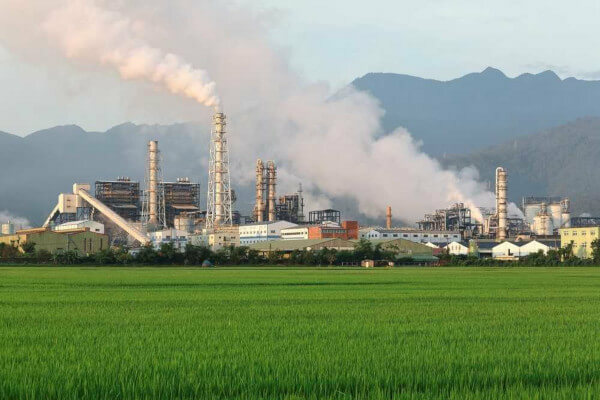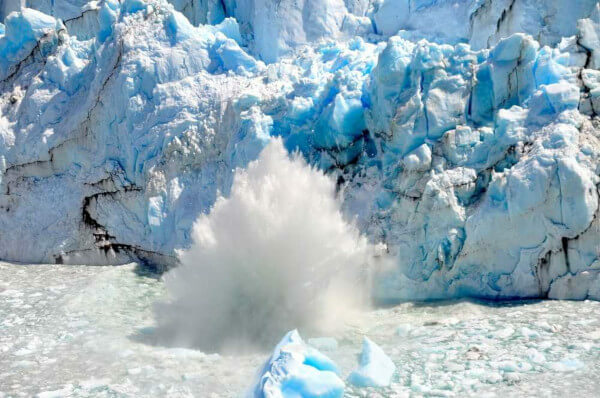O greenhouse effect it is a natural phenomenon of extreme importance for the existence of life on Earth. is responsible for maintain global average temperatures, preventing there being big thermal range and enabling the development of living beings.
This phenomenon, however, has been aggravated by the anthropic action, which has increased greenhouse gas emissions to the atmosphere, causing climate change across the planet. This large concentration of gases makes it difficult for heat to be returned to space, thus increasing the planet's temperatures.
Read too:Importance of sunscreens
How does the greenhouse effect work?

Due to the large concentration of greenhouse gases in the atmosphere, the solar energy reflected by the surface finds it difficult to disperse in space, becoming trapped.
The Sun emits heat to the Earth. Part of this heat is absorbed by the earth's surface and the oceans, another part is returned to space. However, a portion of the solar radiation radiated by the surface is retained in the atmosphere due to the presence of
greenhouse gases, which prevent this heat from being fully returned to space. In this way, energy balance is maintained and large thermal amplitudes are avoided.For a better example, imagine a car parked on a very sunny day. The sun's rays pass through the windows and heat the interior of the vehicle. The heat tends to be returned outside the car, coming out through the glass, however it encounters difficulties. Thus, part of the heat is retained inside the car, keeping it warm.
Making an analogy, the greenhouse gases present in the atmosphere work like the glass of a car, allowing the entry of solar radiation and making it difficult for all of it to be returned to space.
Greenhouse gases
There are four main greenhouse gases. Are they:
Carbon dioxide |
It is the most abundant gas in the atmosphere. the burning of fossil fuels is one of the main activities responsible for emitting this gas. Since the industrial age, the amount of carbon dioxide in the atmosphere has increased by approximately 35%. |
Methane gas |
It is the second gas that contributes the most to the increase in global temperatures, with a power 21 times greater than carbon dioxide. Approximately 60% of methane emissions come from human actions linked to landfills and dumps. Furthermore, it is eliminated through the digestion of ruminants. |
Nitrous oxide |
It can be emitted to the atmosphere by bacteria in the soil or the ocean. Agricultural activities, such as the use of nitrogen fertilizers, are also sources of this gas. Nitrous oxide can contribute about 298 times more than carbon dioxide to increasing temperatures. |
Fluorinated gases |
Fluorinated gases are produced by man in order to meet industrial needs. Examples of these gases are: hydrofluorocarbons, used in heating and cooling systems; sulfur hexafluoride, used in the electronics industry; perfluorocarbon, emitted in aluminum production; and chlorofluorocarbons (CFCs), responsible for the destruction of ozone layer. |
water vapor |
Quite present in the atmosphere, it is responsible for more than half of the greenhouse effect. Water vapor captures the heat radiated by the earth's surface, distributing it in all directions and heating the surface. |
Mind Map: Greenhouse Effect
*To download the mind map in PDF, Click here!
Causes of the greenhouse effect
In recent decades, there has been a considerable increase in the emission of greenhouse gases into the Earth's atmosphere, intensifying the greenhouse effect.
The high concentration of these gases is mainly related to industrial activities, often carried out through the burning of fossil fuels. In addition, the growth of agricultural production, logging and the use of transport are also responsible for the intensification of gas emissions.
greenhouse effect and global warming
The increase in the concentration of greenhouse gases in the atmosphere has caused irreversible changes in the planet's climate dynamics. According to data from the Intergovernmental Panel on Climate Change, the Earth's temperature has increased by about 0.85°C on the continents and 0.55°C on the oceans over a period of 100 years.
The more greenhouse gases emitted into the atmosphere, the more the radiated heat finds it difficult to disperse in space, causing an abnormal rise in temperatures and reaffirming the theory of heating global.
Read too:Climate agreements and global warming
It is important to say, however, that the relationship between the greenhouse effect and global warming is not unanimous among scholars and people in general. Part of the population and the scientific community do not believe that the increase in gases has caused the increase in temperatures, arguing that high warming is just one phase of changing climate dynamics in the Earth.

Industries are the main responsible for the emission of greenhouse gases into the atmosphere, causing global warming.
Consequences of the greenhouse effect
According to the Intergovernmental Panel on Climate Change, the consequences of the greenhouse effect are:
1. Melting ice caps and rising sea levels.
2. Worsening food security, damaging crops and fisheries.
3. Extinction of species and damage to different ecosystems.
4. Land loss due to sea level rise, also causing migratory waves.
5. Water scarcity in some regions.
6. Floods in northern latitudes and the Equatorial Pacific.
Read too:Seven man-made ecological disasters
7. Risks of conflicts arising from the scarcity of natural resources.
8. Health problems caused by increased heat.
9. Predicted temperature increase of 2°C until 2100, compared to the pre-industrial period (1850 to 1900).

The melting of the polar ice caps and the consequent rise in sea level are consequences of the greenhouse effect.
How to avoid the greenhouse effect?
According to the Intergovernmental Panel on Climate Change, between 2010 and 2050, the emission of greenhouse gases should be reduced from 40% to 70%. For this, countries must establish goals to reduce the emission of these gases.
One of the possibilities, which is already a reality in some countries, is the use of alternative energy sources, renewable and clean, replacing the use of fossil fuels. In addition, everyday actions can collaborate to contain the greenhouse effect, for example:
→ Reduce the use of transport on short journeys.
→ Choose to use bicycles or public transport.
→ Use biodegradable products.
→ Encourage selective collection.
See too:Non-recyclable materials
By Rafaela Sousa
Graduated in Geography
Source: Brazil School - https://brasilescola.uol.com.br/geografia/efeito-estufa.htm

